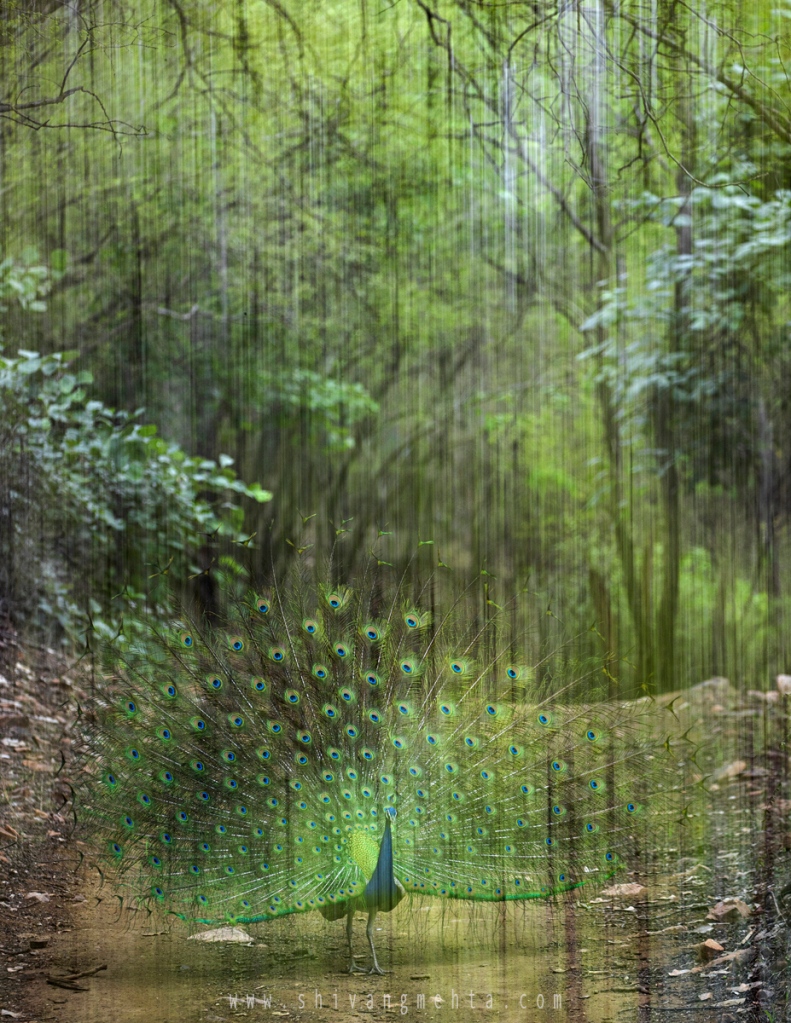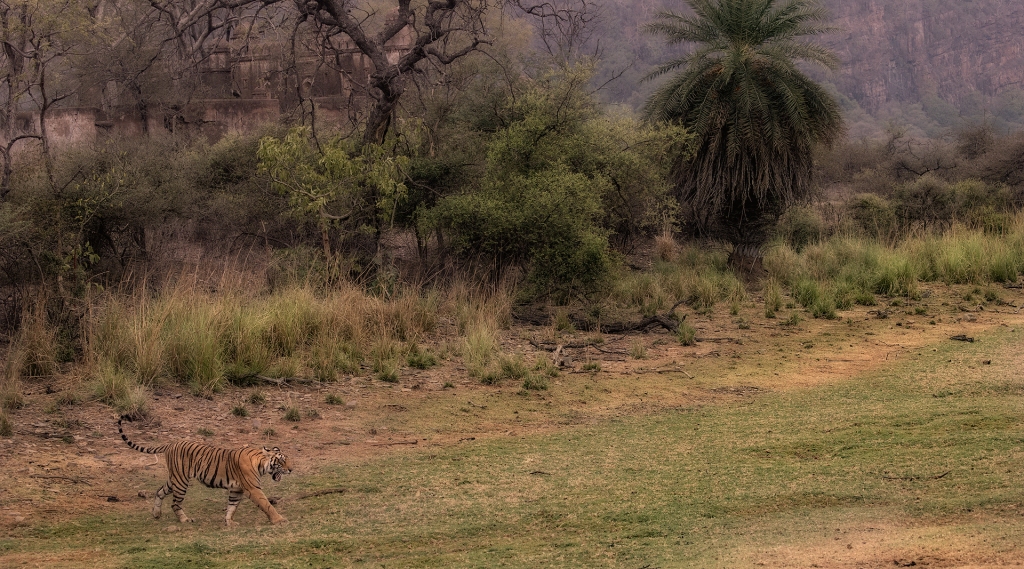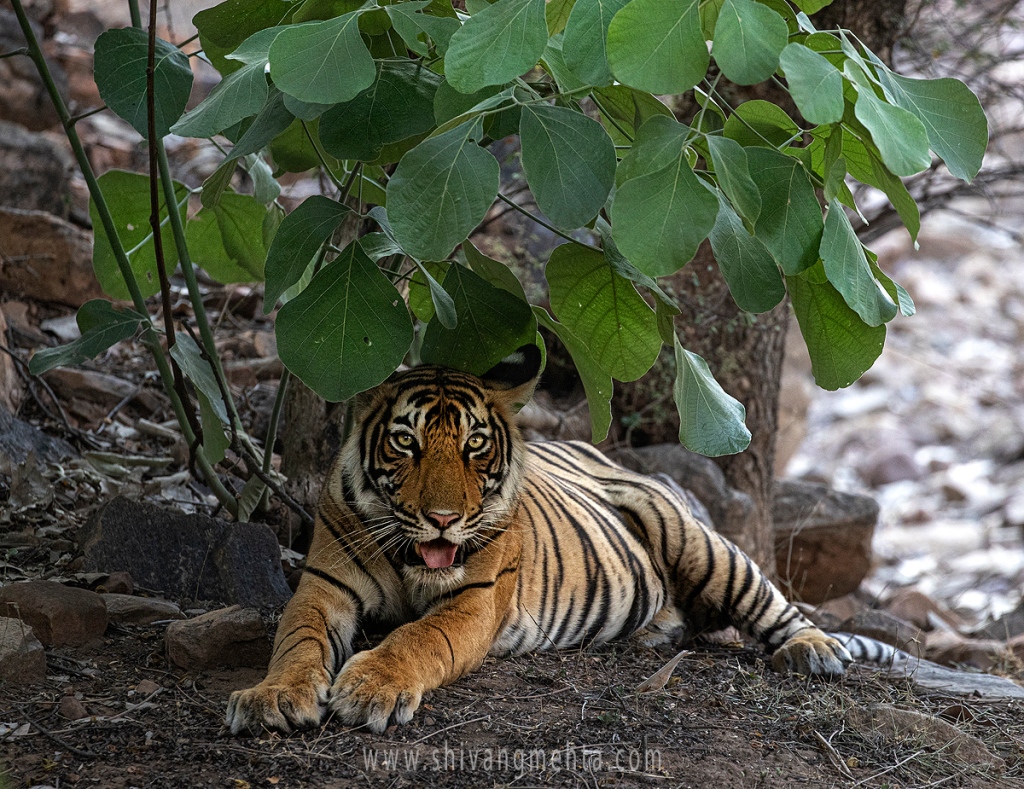First Field Visit Post Lockdown
The world has changed in the past 4 months. For me as a field wildlife professional a lot has changed as this was the first time in nearly 2 decades that I kept away from active field photography such a long duration. As Indian national parks gradually come to terms with the COVID-19 tourism dynamics I visited Ranthambore National Park for a quick field visit. Life inside the forest was usual and life outside the forest was changed as it should have been. Sanitisation of safari vehicles, use of masks during safaris, sanitisation rules of lodges – these are some norms which we should be getting used to as India gears up for the post COVID-19 phase of wildlife tourism.
Here are some images are a short video that summarises the entire journey post the lockdown. It is not tough. Just take all precautions and you can keep that passion and hunger for outdoors alive!



Tackling “Tiger Boredom”


Shooting Portraits



The Dissection Technique for Portraits





The Cement Issue


Tiger in cemented waterhole – Bandhavgarh
Reflections


October Expeditions Recap
It started with a brief photography tour in Ranthambhore wherein we inaugurated the post monsoon season with some lush green images of tigers in a monsoon forest. The sightings in both the batches were awesome and the greens added a punch to the images. It rained heavily during batch 2 but photographing a young male tiger in the rains was absolute fun for our guests.
I then changed gears and moved to Eastern Himalayas in the Indo-Nepal border to track down red pandas in the wild. A bunch of photographers who roughed it out in the tough terrains to photograph the elusive red panda and the efforts yielded rich dividends in the form of 5 individual sightings over a 3 week period.
Getting ready to judge the Canon Photo Marathon in New Delhi as of now before setting of to Easter Himalayas yet again for some more hardcore sessions with the pandas.
Here are some images to sum up the month:
Tiger Diaries – June 2016
It has been a hectic but productive June till now. We started our work in Ranthambhore working on T60 and cubs when a news from Bandhavgarh caught our attention. A tigress called Spotty in the Tala zone of Bandhavgarh had given birth to her first litter. Weighing various pros and cons we changed gears and rushed to Bandhavgarh to start some extensive tracking for the newly seen cubs. A 7 day project resulted in some brilliant images of 2 month old tiger cubs for our guest who showed remarkable patience and perseverance in extreme weather conditions.
Monsoons showers have started hitting tiger parks and as we enter the last 10 days of the season lets wish the wild denizens of India a safe monsoon.








Tiger Marathon 2016 – Field Updates
The 2016 edition of Tiger Marathon – the annual back to back tiger photography tours by Nature Wanderers – ended this week with some exemplary sightings in Ranthambhore and Corbett National Park. While the lakes were productive again in Ranthambhore, we also got the opportunity to photograph the newly crowned mother T60 and her 3 cubs. Sessions with Noor (T39) and T57 were equally intense and productive.
Corbett on the other hand along with expected elephant action was ruled by Paarwali sightings as the river mermaid of Ramganga gave multiple opportunities for photography in typical Corbett habitats. Here are a few images created in the past fortnight.




















Jan 2016 Travel Diaries
The beginning of the new year has been a bit low on travel as a lot of work is being done around some exciting wildlife programs to be conducted in the coming months of 2016. Though my colleagues Sagar Gosavi and Jagdeep Rajput conducted some extensive programs in Corbett National Park, I squeezed in time for a photography tour commitment in Kanha and did a impromptu game drive in Ranthambhore.
Here is a brief visual diary of some images created in the first fortnight of 2016. Stay tuned for some exciting updates this February and March.
Canon – Nature Wanderers Photo Tours – Spring & Summer 2016
Season 2015-2016 has started on a great note with multiple tiger parks showcasing a promising future. While Ranthambhore still leads the charts as Krishna and Noor clans are beginning to carve out their own path, Bandhavgarh, Tadoba and Pench have all reported tiger cubs which throws open a lot of photo opportunities in all the parks through the coming spring and summer. The evergreen Corbett National Park had ended on a high note last season and we at Nature Wanderers are all geared up for our winter Corbett schedules to be led by a photographer who has been breathing Corbett for 25 years… Mr. Jagdeep Rajput.
I am pleased to share with you the calendar for 2016 spring and summer schedules for various tiger reserves.
January 2016
Bandhavgarh Sunrise to Sunset Safaris – Jan 13-17 (5 seats… 2 seats left)
Unexplore Corbett with Jagdeep Rajput – Jan 23-26 (6 seats)
February 2016
Jagdeep Rajput Masterclass – Ranthambhore – Feb 11-14
Corbett with Shivang Mehta (Bijrani + Dhikala) – Feb 24-28
March 2016
Bandhavgarh (Good Friday weekend with Shivang Mehta) – Mar 23-27
Jagdeep Rajput Masterclass – Ranthambhore (Good Friday weekend) – Mar 24-27
April 2016
Jagdeep Rajput Masterclass – Pench edition – Apr 7-10
May 2016
Tiger Marathon with Shivang Mehta
Tiger Marathon – Batch 1 – Ranthambhore – May 5-8
Tiger Marathon – Batch 2 – Ranthambhore – May 8-11
Tiger Marathon – Batch 3 – Corbett – May 12-15
Tiger Marathon – Batch 4 – Corbett – May 16-19
Maximize your field productivity
Every day as I accompany photographers on the field, the sight of a tiger makes cameras go ballistic as triggers are pressed with sheer madness. Sitting in the hotel room when I see the days work of people the hard disks are full of similar looking images and then the ‘I wish’ list begins… I wish I had shot like this… I wish I had done this better…
I always wonder that when you as a photographer pick your camera to shoot say a spotted deer a lot of thought goes behind that image. You take the pain to place the deer properly in the frame, you experiment with compositions. Why does that happen? It is just because you consider the deer as a subject. Yes subjects like tigers are rare to find but the moment you get a control on your mind and start treating them as subjects you will end up maximizing your field productivity and make best use of the opportunities that nature presents in front of you.
Have you ever tried pondering on the following points?
- Removing your eye from the view finder to see the subject with your naked eyes and scan for elements which can be added or removed from the frame?
- You may be using the biggest prime lens in the world that will give you a razor sharp image. However are those sharp images needed every time? How about experimenting with varied focal lengths to create 4-5 different images of a moment as simple as a tiger sitting under a tree.
- Reading the light and pre-visualizing images for a certain light situation. You may end up forgoing some images but you will be better prepared for that particular lighting scenario
I got hold of the new and revamped Canon 100-400mm IS2 and rested my Canon 70-200mm f2.8 IS2. I used it extensively in Ranthambhore throughout last week. Here is an example from Ranthambhore where a tiger sitting under a tree was shot in 5 different ways as varied focal lengths.
Ranthambhore… post 2015 monsoons
Climates change patterns are being witnessed globally and Ranthambhore has not been spared in the past few years. The park received scanty rains and though the forest looks lush green post monsoons, the water in the park should dry up soon. The first week of Ranthambhore post monsoons has witnessed some decent tiger sightings. While the dynamics around the lakes is changing with Krishna cubs moving towards the road of independence, Noor (T39) has managed to keep her cubs safe through the monsoons and both the families have given photographers some decent photo opportunities in week one. The tall grass has been a challenge for shooting though the greens do give a punch to the images. During the Canon – Nature Wanderers Ranthambhore Opener photo tour, our participants got some good photographic opportunities with T19 and cubs, T39, T28, T8 and T74. While the participants created some magical images, here are some which I could manage in the last week…
Incidentally all the images below are taken using the Canon 100-400mm IS2. I loved using this focal range after nearly 6 years and hardly used the Canon 400mm f2.8. It was fun playing around with compositions using a 100-400 focal length without worrying about the image quality.
Ranthambhore – End of season June update
June is always a tricky month for Ranthambhore. Pre monsoon showers and the western disturbances hamper tiger sightings but the forest sparkles green regaining its emerald flavor and this gives a boost to the images you end up creating during this month.
T19 (Krishna) and cubs were in prime action during the month of June. The interactions between the cubs are no longer playful and they lose no opportunity to showcase their dominance over each other. On the other edge of the forest, T39 (Noor) and her 2 male cubs controlled the sightings till early third week of June. Heavy rains in the last 10 days of the forest season did impact the tiger movements towards the end of June but the highlight of the month was the bold moves by Krishna cubs towards a huge crocodile on the edges of Rajbagh lake. While I was busy with some amphibian assignments in the Western Ghats, I am glad that Nature Wanderers photography mentor – Jagdeep Rajput along with our clients were there at the right time to shoot this epic sequence.
June 30th was a befitting end to a challenging, tiring yet rewarding season in Ranthambhore. T28 (Star) walked in pristine light at the edges of the lake with the majestic fort in the backdrop. For a change there were no vehicles around to hasten his slow and graceful walk before he disappeared in the Rajbagh palace.
Presenting a few glimpses of June 2015 from Ranthambhore. End of a memorable back-to-back 9 month run with the denizens of the lakes. Wishing the young brigade a happy and safe monsoons.
Ranthambhore – May Diaries
Just wrapped up a 2 month schedule at Ranthambhore. Come May and a lot of drama unfolded in Ranthambhore post T24 (Ustaad) killing a forest guard on May 8th during the tourism hours on the fort road of the park. The tiger has now been shifted to a enclosure in Udaipur which has caused a massive uproar across the wildlife fraternity and social media platforms have gone viral with hate campaigns. As the legal bodies decide the fate of T24, here is a brief round up for May.
There has been a visible change in the family dynamics around the lakes as Krishna cubs started making a few independent kills while the mother wasn’t around. On multiple occasions I felt that the mother displayed her irritation towards the cubs and on a lot of days the family was scattered around the lake areas. However the moments of unity were touching as I caught the entire family chilling out one morning as the family united once again and moved towards Rajbagh.
While clouds of uncertainty surrounded T24, his offsprings have been literally controlling the sightings of the park in May as the mother T39 (Noor) was seen frequently along with the family. I also documented T24 a day before the tragedy and couple of times post the tragedy. It was quite emotional to shoot a tiger who was spending his last days in the wild.
Talking of some last images of a tiger, the exiled queen Machali (T16) made a surprise entry in the tourism area for just a few hours after a long gap. She has been suffering from cataract but still holds her charm. Probably the last we have seen of Machali … though she always comes up with surprises so you never know!
Here are some images to round up the month of May in Ranthambhore:
The First Catch…
The days of innocence are finally coming to an end in Ranthambhore. It was a quite morning around the lakes in Ranthambhore. Krishna (T19) and her young battalion of 3 cubs were scattered all over the lake area and there were no signs of the tigers for the first few hours in the morning. Scenarios can however change within seconds and Krishna sprung out of a dry river bed with the 3 cubs and they marched towards the hunting palace in the middle of the lakes.
One of the cubs separated from the family suddenly got distracted because of a cheetal fawn and sprung up in action sprinting towards the prey in dense foliage. The cub caught hold of the cheetal fawn but catching hold of the prey is just step 1 of being an experienced tiger in the wild. Bringing the prey down with that lethal blow is the key for a successful hunt. The cub definitely lacked this experience as the canines are not yet effective to suffocate the prey.
The painful cries of the young fawn echoed in the forest as the young tiger cub failed to understand how to kill its first catch. The tiger then started ripping the fawn apart from its hinds and started consuming the morning meal alive.
Experience does matter to survive in the wild!
Ranthambhore Diaries – April the onset of summers
It is the end of April out here in Ranthambhore and probably for the first time the forest is looking lush and green even as the temperatures soar up. The water table which had shot up because of the March rains is all getting dried up very fast and all this is giving us the unique opportunity to photograph tigers in a lush green semi-monsoon habitat.
While T19 (Krishna) and her cubs are keeping the shutters busy, T39 (Noor) and her 2 young cubs have also made an entry into the tourism zones. Even the other zones have seen some awesome tiger sightings in the form of T42 and T13 mating and T8 and her cub giving good photo opps in the Kundal area of Ranthambhore.
Here is a brief photographic journey through Ranthambhore through the month of April.
A morning at Rajbagh…
January 25, 2015
It was a cold winter morning in Ranthambhore National Park. For 3 days Krishna (T19) and her young battalion of 3 cubs had concealed themselves in a patch of grass on the edges of the lake where they were feeding on a sambar kill. The sky was finally opening up after 3 days of cloud cover and the soft morning light was filtering through the Rajbagh mist. The stage was set for some fabulous tiger photography the cubs finally emerged out of the tall grasses to put up wonderful show in front of a bunch of lensmen who created some outstanding images that morning.
Check out this video that sums up a winter morning at Rajbagh:
Ranthambhore : March Diaries…
March was a month we all were looking forward to in Ranthambhore. The stage was set for some great tiger action to kickstart the long summer. Scanty monsoons had ensured that the water sources in the park were drying up fast which would have resulted in some easy pickings in terms of tiger sightings around the lakes. However unseasonal rains which last for a few days dampened the spirits in mid-March as the forest turned lush green again with water tables going up again for the first time in the past many months.
Despite of the overall tiger sighting dipping in the park, T19 (Krishna) and her clan made some appearances around the lakes. The cubs are growing fast and are at their active best when the mother is around. Here are some glimpses from Ranthambhore this March.
Ranthambhore Post Monsoons
A week in Ranthambhore post a 3 months monsoon break is rejuvenating as usual. The forest is like a green book full of mysteries unfolding in every nook and corner and every day is a new chapter in this book. This year was particularly interesting because of the presence of cubs all around the park. The progress of the few key tiger families like the celebrated lady of the lakes -T19 and her cubs and charismatic T39 (Noor) was particularly in question as everyone wanted to know how the little striped wonders of the park were doing post the monsoon break. Though monsoons is a tricky period for tiger sightings, the entire park (zone 1-10) flourished with sightings announcing Ranthambhore to be the place to look out for in 2014-2015.
Here are some of the key tiger moments captured in this first week of season 2014-2015 in Ranthambhore National Park – the tigerland of India.











































